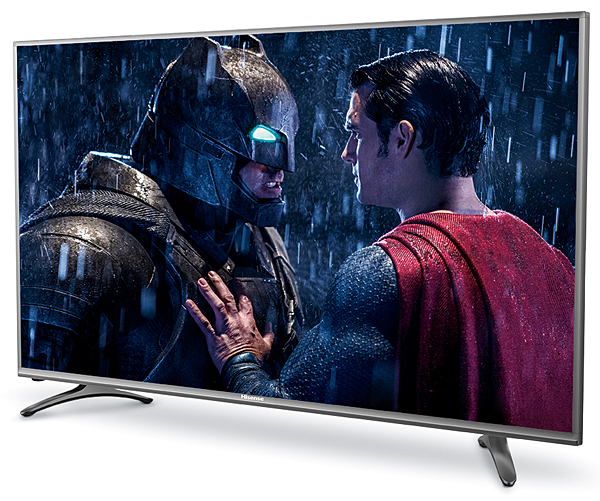Hisense 50H8C LCD Ultra HDTV Review Page 2
 The 50H8C may pale next to Ultra HD Premium TVs when it comes to reproducing an extended color gamut, but it does manage to pump out an impressive amount of light when displaying HDR content—not enough to touch the 1,000-nit Premium TV spec, but enough to give HDR-encoded content a sense of visual punch. Displaying patterns from a special test Ultra HD Blu-ray, the 50H8C showed detail up to 600 nits before clipping. That’s not bad, but it’s also plenty short of Premium.
The 50H8C may pale next to Ultra HD Premium TVs when it comes to reproducing an extended color gamut, but it does manage to pump out an impressive amount of light when displaying HDR content—not enough to touch the 1,000-nit Premium TV spec, but enough to give HDR-encoded content a sense of visual punch. Displaying patterns from a special test Ultra HD Blu-ray, the 50H8C showed detail up to 600 nits before clipping. That’s not bad, but it’s also plenty short of Premium.
Performance
To test out the 50H8C’s black depth, shadow detail, and local-dimming backlight performance, I first watched a few scenes from a longstanding reference Blu-ray, 2001: A Space Odyssey. In early shots of apes resting together at night, blacks looked inky and deep, while highlights such as the whites of their eyes and the moonlight glinting off their fur gave the image a 3D-like quality. So far, so good. When I watched a subsequent scene of a shuttle hurtling through space, I was impressed by the TV’s ability to maintain strong contrast between starfields and the black space in the background, but I also noted a degree
of light bleed in the black letterbox bars around the image. Not great, but also not unexpected for a low-budget set with local dimming.
Watching a Blu-ray of a more recent take on sci-fi, Midnight Special, I immediately noted similar local-dimming issues in the title sequence, with light-toned “blocks” appearing around the white-on-black titles. That said, I didn’t notice the problem nearly as much during the film’s many nighttime driving scenes. In these shots, bright head- lights cutting across the dark country roads had a dynamic quality that was carried off by the set’s ability to maintain deep blacks. However, in interior shots of the car where the boy, Alton, reads comic books by flashlight, I did find shadow detail to be lacking—a shortcoming I noted with several other sources I subsequently viewed on the 50H8C.
While Midnight Special is mostly a dark film, a scene where cult members are rounded up in a high school gym by FBI agents did give me an example of the 50H8C’s accurate post-calibration color. As the zombified community lined up in rows for debriefing, the light pastels of the women’s simple dresses looked natural, and I could see fine differences in hue in their mostly pale skintones. As with the many other LCD TVs that use a Vertical Alignment (VA) panel type, color and contrast faded noticeably when the 50H8C was viewed from about 15 degrees off axis. The set’s semi-glossy screen also proved to be fairly reflective of room light.

To test HDR, I used an Ultra HD Blu-ray of The Martian, a movie I’m now very familiar with, having used it to clinically assess a different display. In the scene where Matt Damon extracts a metal rod from his torso (not a scene for the squeamish), shadows maintained depth as the LED lamps positioned around the room beamed powerfully. The net effect wasn’t as dynamic as what you’d get with a much more expensive, high-end UHDTV, but there was little doubt that it was HDR. One telltale sign: the beads of perspiration on the astronaut’s chest as he struggled to endure the procedure. The fine level of highlight detail here helped create the realistic, 3D-like depth that is characteristic of the best HDR demos I’ve seen.
Conclusion
At $549, Hisense’s 50H8C
is an impressive TV for the price. I’d easily recommend it to a friend on a tight budget seeking an affordable set for watching movies and just about anything else. That said, its limited color reproduction capability, combined with less than perfect local dimming and somewhat cheap build quality, stops me from recommending it outright to a serious A/V enthusiast. The 50H8C does many things well, but at the same time, you only get what you pay for.




























































